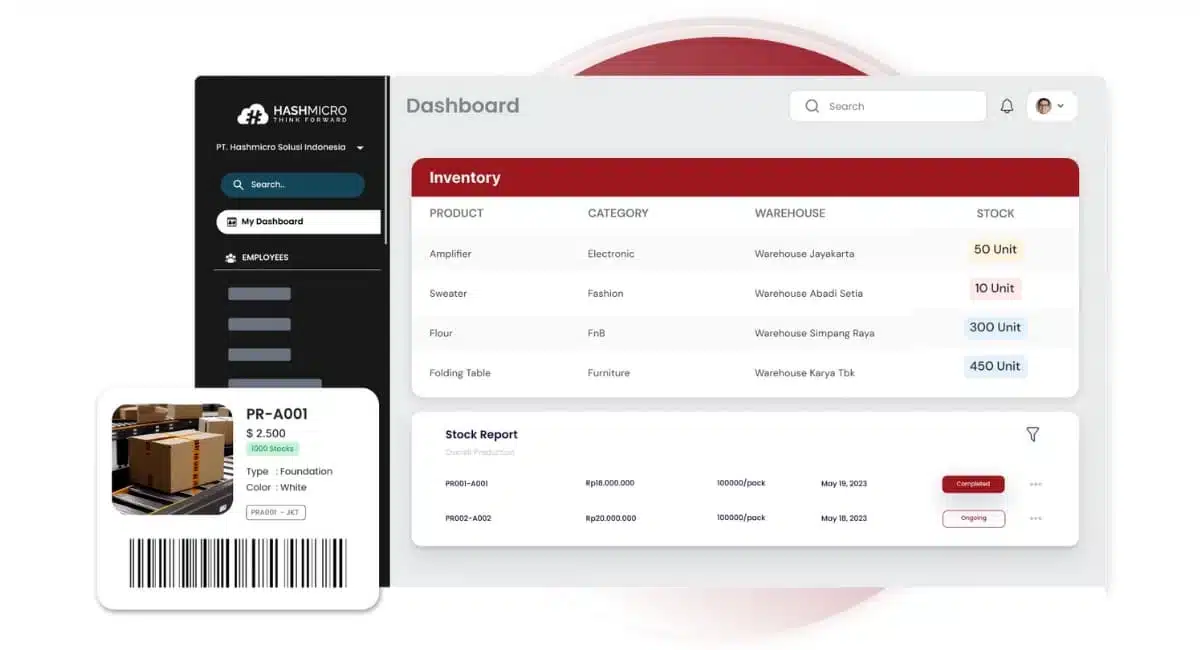ABC inventory analysis, first introduced in the 1950s, is a time-tested method that helps businesses categorize stock based on importance and value. The approach is rooted in the Pareto Principle, which suggests that 80% of a company’s revenue typically comes from just 20% of its inventory.
Strategically allocating resources in your business using ABC analysis, optimizes efficiency and reduces the burden of managing low-impact stock, this is a powerful tool for effective inventory management.
In this article, you’ll discover step-by-step guidance on implementing ABC analysis, explore its practical applications, and learn best practices for maintaining accurate classifications. By understanding these concepts, your business can enhance inventory management, improve demand forecasting, and boost overall profitability.
Key Takeaways
|
Table of Contents

What Is ABC Analysis in Inventory Management?
ABC analysis is a key inventory management technique that categorizes stock into A, B, and C classes based on value and usage. This analysis is derived from commonly used guidelines based on the Pareto Principle (80/20 rule), which suggests that a small proportion of items typically accounts for a large share of value or revenue. Here are more details:
- Category A: Typically represents about 20% of items but accounts for 70-80% of value.
- Category B: Covers around 30% of items, contributing 15-25% of value.
- Category C: Represents 50-60% of items but only contributes 5-10% of value.
These percentages can vary depending on the industry and specific business needs. Beyond its basic application, more advanced uses of ABC analysis include integrating factors like seasonality, supplier reliability, and item criticality. Some companies dynamically adjust classifications using inventory managementsoftware that factors in market trends and changing business conditions.
Most ERP systems, including inventory management software, now offer ABC analysis as a built-in feature. This enables businesses to automate the classification process, making it easier to maintain accurate inventory control and enhance overall efficiency.
For businesses looking to simplify and enhance their inventory management processes, HashMicro’s Inventory Management Software offers an all-in-one solution that automates ABC analysis. The software not only categorizes items based on real-time data but also adapts to market changes, helping you maintain accurate stock levels effortlessly.
How to Perform ABC Analysis
To perform ABC analysis effectively, begin by identifying and listing all inventory items, including raw materials, finished products, and other stock essential to your operations. You can follow these key steps:
- Identify and List Inventory Items: Start by compiling a comprehensive list of all inventory items, including raw materials, finished goods, or any other stock relevant to your business.
- Calculate Annual Usage Value: For each item, determine its annual usage value. This is done by multiplying the unit cost of the item by its annual consumption or demand. The result represents the total monetary value that each item contributes over a year.
- Rank Items by Value: Once you’ve calculated the usage value, sort the items in descending order, starting from the highest to the lowest. This ranking highlights which items are the most significant in terms of financial impact.
- Classify Inventory into Categories: Based on the sorted list, classify the top 20% of items by value as Category A. These are your most critical and valuable items. The next 30% fall into Category B, representing moderately valuable items that need balanced control. The remaining 50% are Category C, low-value items that require minimal management.
- Develop Control Strategies: Once classified, each category should have distinct control and monitoring strategies. For example, Category A items need rigorous monitoring, frequent reviews, and optimized ordering processes, while Category C items require simple, periodic checks.
- Implement and Monitor: Continuously monitor and adjust your inventory management practices. Regularly update the classifications based on changes in demand, cost, or market trends to maintain the effectiveness of your ABC analysis.
Using cloud inventory management simplifies these steps by automating the entire process. The software calculates the annual usage value, ranks items, and automatically classifies them into categories. It also tracks real-time inventory changes, helping businesses maintain accurate classifications and adjust strategies as needed.
This automation not only saves time but also ensures precision, allowing managers to focus on strategic decisions rather than manual calculations.
Read more: Top Construction Inventory Management Software
Benefits of ABC Analysis
Implementing ABC analysis can provide several targeted advantages for businesses in the Philippines, particularly in managing diverse and complex inventories. Using inventory software would greatly benefit doing an ABC Analysis, the benefits of doing an ABC Analysis are:
- Better Inventory Management
ABC analysis helps businesses focus on high-value items, reducing stockouts and overstock, leading to better cash flow. It also improves demand forecasting by prioritizing items with the greatest revenue impact. - Increased Profitability
By focusing on critical items, businesses can refine pricing and purchasing strategies, optimizing resources for maximum profit while minimizing costs on low-impact items. - Efficient Resource Allocation
Managers can concentrate efforts on high-priority items (Category A), freeing up resources and time, and making operations more efficient, especially in resource-constrained environments. - Supply Chain Resilience
For local businesses, focusing on crucial items ensures better stock levels even during supply chain disruptions, crucial in a market with variable supply consistency. - Automation and Scalability
Inventory software with built-in ABC analysis automates classification, enabling businesses to scale operations smoothly as they grow, ensuring consistent efficiency.
ABC analysis equips businesses with the tools needed to manage inventories more effectively, optimize resources, and ultimately boost profitability, making it a valuable practice for any Philippine business looking to enhance its operations.
Limitations of ABC Analysis
While ABC analysis offers significant benefits, it does have several limitations that businesses, including those in the Philippines, should be aware of. Some of those are:
- Reliance on Historical Data
ABC analysis is heavily based on past data, which might not reflect future trends or shifts in demand. If market conditions change, outdated classifications can lead to stock management issues. - Overlooking Critical Factors
This analysis mainly focuses on value but often neglects factors like lead times, perishability, and seasonal demand. Important items can be misclassified as low priority, resulting in inefficiencies. - Resource-Intensive Process
Regularly monitoring, updating, and reclassifying inventory categories requires significant time and effort, especially for businesses managing large inventories. - Subjective Categorization
Without clear guidelines, categorization can become arbitrary, leading to inconsistencies across different managers or departments. - Limited Applicability for Uniform Items
Businesses with evenly distributed inventory values may find that ABC analysis doesn’t provide meaningful insights, making it less useful for operations with similar product values.
Using inventory management software can mitigate many of these issues by automating data updates and classification processes, ensuring consistent and efficient inventory control management.
However, note that inventory list should be submitted to the Bureau of Internal Revenue (BIR), so make sure that all your receipts and invoices comply with the inventory list BIR requirements.
Best Practices for Implementing ABC Analysis
To effectively implement ABC analysis, classifications must be kept simple and regularly updated. Categorize items based on value, usage, or profitability, and ensure frequent reviews, especially for Category A items, which have the highest impact. Integrating inventory software automates this process, making updates seamless.
Tailor service levels and labor allocation according to each category’s importance. For instance, Category A items require frequent checks and higher service targets, while Category C items can be monitored less often. Setting distinct KPIs for each category helps managers focus efforts strategically.
Flexibility is key—reclassify items as market trends, customer behavior, or sales volume shift. Using technology simplifies tracking, demand forecasting, and maintaining optimal stock levels, ensuring your inventory management remains efficient and responsive.
Another practice that the inventory teams can do is to combine ABC analysis with XYZ analysis for more well-rounded visibility to their inventory conditions. Read more on our ABC XYZ analysis article for further insight and imrpove your practices.
Simplify ABC Analysis with HashMicro’s Inventory Management Software
Managing inventory effectively requires accurate ABC analysis, but manually categorizing stock can be time-consuming and error-prone. HashMicro’s Inventory Management Software automates this process, ensuring your ABC analysis stays accurate and up-to-date with minimal effort. With advanced automation, real-time tracking, and customizable inventory reports, HashMicro helps businesses maintain optimal inventory levels while focusing on key profit drivers.
HashMicro’s Unique Selling Points (USPs):
- Automated Inventory Classification: Automatically categorize items into A, B, and C based on real-time data, eliminating manual effort.
- Real-Time Updates and Tracking: Always keep your ABC analysis accurate with automatic reclassification as market conditions change.
- Customizable Reports and KPIs: Generate detailed, tailored reports and insights for each category, helping you make better decisions.
- Seamless Integration with ERP Modules: Easily connect with other systems like procurement and sales, providing a holistic view of inventory management.
- User-Friendly Interface: Navigate through features with ease, making it simple for any team member to implement and manage ABC analysis.
Among the various inventory management options available, HashMicro stands out as one of the top choices in the Philippines. It enables businesses to fully automate the ABC analysis process, helping them save time, minimize errors, and stay ahead of demand fluctuations with ease and accuracy.

























